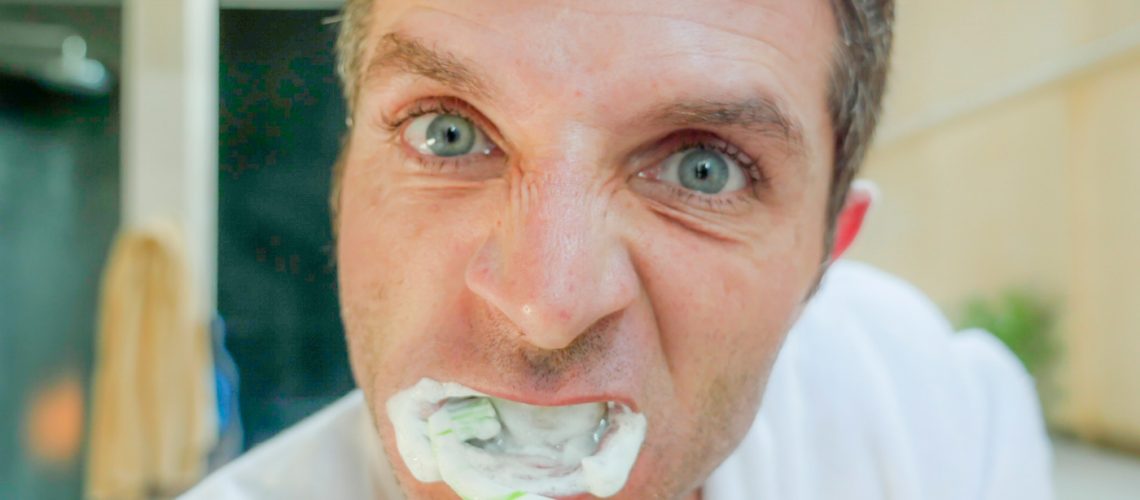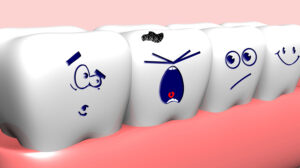 When it comes to dental decay, there isn’t always a straightforward yes-or-no answer to the question—can you reverse tooth decay? However, in some cases, it may be possible to arrest, or stop, the progression of dental decay.
When it comes to dental decay, there isn’t always a straightforward yes-or-no answer to the question—can you reverse tooth decay? However, in some cases, it may be possible to arrest, or stop, the progression of dental decay.
Dental decay is caused by a combination of factors, including poor oral hygiene, certain types of foods and drinks (especially sugary or acidic ones) and other conditions that make it easier for bacteria to grow in your mouth. Once dental decay has begun, it can progress quickly—within just a few days—if not treated.
Left untreated, dental decay can lead to pain, tooth loss and other serious problems. But if you catch it early enough, you may be able to reverse the damage and avoid these complications.
To understand when and how to reverse dental decay, you need to first understand how dental decay progresses from beginning to end. Here is some information from our Mesa dentists.
The Tooth Decay Process
 Most dental problems are caused by dental plaque—the acidic, bacteria-ridden fuzzy stuff that sits on your teeth when you go too long between brushing.
Most dental problems are caused by dental plaque—the acidic, bacteria-ridden fuzzy stuff that sits on your teeth when you go too long between brushing.
Dental decay progresses along some fairly predictable steps.
Stage 1 – Demineralization
The first stage of decay is called demineralization. This is when plaque begins to eat away at your tooth enamel, the hard, protective outer layer of your teeth.
Enamel is made up mostly of minerals, including calcium and phosphate. These minerals give enamel its hardness, but plaque contains acids that break down these minerals in your enamel.
Once the mineral levels in your enamel get low enough, the tooth becomes less hard and more vulnerable to decay.
This process of demineralization usually happens gradually over time and can even happen without you noticing it.
Symptoms of demineralization include white or grey spots on the tooth that look like cavities, but are not.
Demineralization can be stopped and reversed with improved dental hygiene and improvements in diet.
Stage 2 – Cavitation
If dental decay isn’t caught early and treated, it can progress to form cavities. This is where things begin to get painful.
Cavities are small holes in the tooth that form when tooth enamel is completely broken down. Cavities form in the dentin, which is the bony layer just underneath the enamel.
They can be very painful, especially when they become infected.
Cavities must be treated by a Mesa dentist as it is not possible to reverse a cavity naturally. Our Mesa dental fillings are usually the most appropriate solution.
Stage 3 – Pulpitis
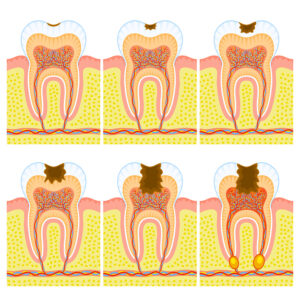 The harmful bacteria in untreated cavities can make its way into the tooth pulp—the soft, fleshy core of the tooth that contains the tooth nerve and various blood vessels.
The harmful bacteria in untreated cavities can make its way into the tooth pulp—the soft, fleshy core of the tooth that contains the tooth nerve and various blood vessels.
Infection of the tooth pulp leads to inflammation, but since the swelling is suppressed by the surrounding dentin, the pressure gets forced downward onto the tooth nerve. This can cause the nerve to be cut off from its nutrient supply from the blood vessels, leading to the death of the tooth.
Pulpitis is a very painful problem, and it is best resolved through endodontic therapy, or a root canal.
Endodontic therapy is a widely practiced and highly successful dental procedure that involves removing the infected tooth pulp and replacing it with an inert filling material. This procedure seals off the tooth so that bacteria cannot enter it, and it also relieves the pressure on the tooth nerve, thus alleviating pain.
A root canal is typically a very effective way to treat dental decay, and it can often save a tooth that would otherwise need to be extracted.
Stage 4 – Abscess
If the infection of the tooth pulp is left to progress, it can eventually lead to an abscess. This is an inflamed pocket of pus that forms at the end of the tooth root, and it can cause severe pain and swelling. An abscess can also lead to serious health complications if it is not treated promptly, such as infection of the bloodstream.
A root canal is often the best way to treat an abscess, as it will clean out the infection and allow the abscess to heal. In some cases, however, the damage to the tooth may be too great and the tooth may need to be extracted.
Gum Disease
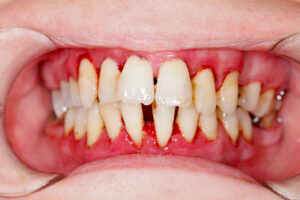 Gum disease, also called periodontal disease, is another leading cause of tooth loss. Gum disease is an infection of the gums that can progress to affect the bone supporting the teeth.
Gum disease, also called periodontal disease, is another leading cause of tooth loss. Gum disease is an infection of the gums that can progress to affect the bone supporting the teeth.
Gum disease is usually caused by plaque, which can harden into calculus, also called tartar, which is even more difficult to remove. As calculus builds up at the gum line, they become inflamed as a defense mechanism against the acidic, bacteria-laden substance. However, this inflammation can damage the gums and eventually lead to tooth loss.
Gingivitis is the first stage of gum disease and is typically mild. Symptoms include gum discoloration, excessive bleeding when brushing or eating, gum tissue sensitivity and persistent bad breath. Fortunately, gingivitis can be reversed with regular professional cleanings and improved at-home oral hygiene to reverse gum disease naturally.
If gingivitis is not treated, it can progress to periodontitis, which is a more serious form of gum disease that can destroy the connective tissue and bone that support your teeth. Symptoms of periodontitis include receding gums, deep pockets between teeth and gums, loose teeth and changes in your bite. In severe cases, tooth loss may occur. While periodontitis cannot be reversed, it can be treated and controlled with proper dental care.
To Prevent Tooth Decay, Practice Good Oral Hygiene & Visit Your Dentist Regularly
 It’s important to maintain dental health by practicing good oral hygiene and visiting your dentist regularly. Brushing twice a day with toothpaste, flossing daily and eating a balanced diet helps to keep your teeth and gums healthy. Be sure to schedule regular professional cleanings and check-ups with your dentist. These appointments give your dentist the opportunity to remove plaque and tartar buildup, as well as look for any early signs of decay or disease.
It’s important to maintain dental health by practicing good oral hygiene and visiting your dentist regularly. Brushing twice a day with toothpaste, flossing daily and eating a balanced diet helps to keep your teeth and gums healthy. Be sure to schedule regular professional cleanings and check-ups with your dentist. These appointments give your dentist the opportunity to remove plaque and tartar buildup, as well as look for any early signs of decay or disease.
If you have gum disease, quitting smoking is one of the most important things you can do for your oral health. Smoking cigarettes or using other tobacco products makes you more susceptible to gum disease and decreases the success of treatment.
Come Into Elite Smiles for a Dental Exam & Cleaning
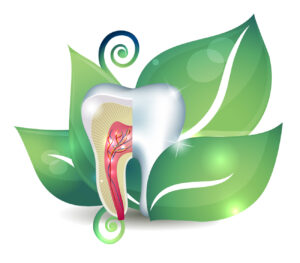 Elite Smiles is dedicated to providing excellence in dental care. We offer a wide range of services, from restorative and cosmetic to leading techniques in biocompatible dentistry. Our goal is to help you achieve and maintain optimal oral health for a lifetime.
Elite Smiles is dedicated to providing excellence in dental care. We offer a wide range of services, from restorative and cosmetic to leading techniques in biocompatible dentistry. Our goal is to help you achieve and maintain optimal oral health for a lifetime.
As practitioners of biocompatible dentistry—otherwise known as holistic dentistry, natural dentistry and organic dentistry—we offer our patients a different way of approaching their oral health. We believe that the health of your mouth is connected to the body’s overall health, and we take a comprehensive approach to dental care that considers the whole person.
Schedule an appointment with our dentists today!

